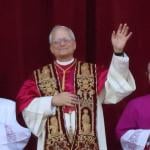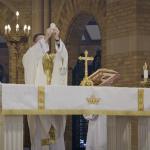Laying the Corner Stone of a Catholic Church.The Brooklyn Eagle, July 18, 1853 Yesterday afternoon the corner stone of a Catholic church, dedicated to St. Mary, “star of the sea,” corner of Court and Luqueer streets, was laid with the usual ceremonies, His Grace Archbishop Hughes being present, and officiating on the occasion. The ceremonies were announced to commence at 4 o’clock, P.M., but it was near 6 o’clock before the Archbishop arrived. A vast crowd had assembled, consisting of... Read more



















